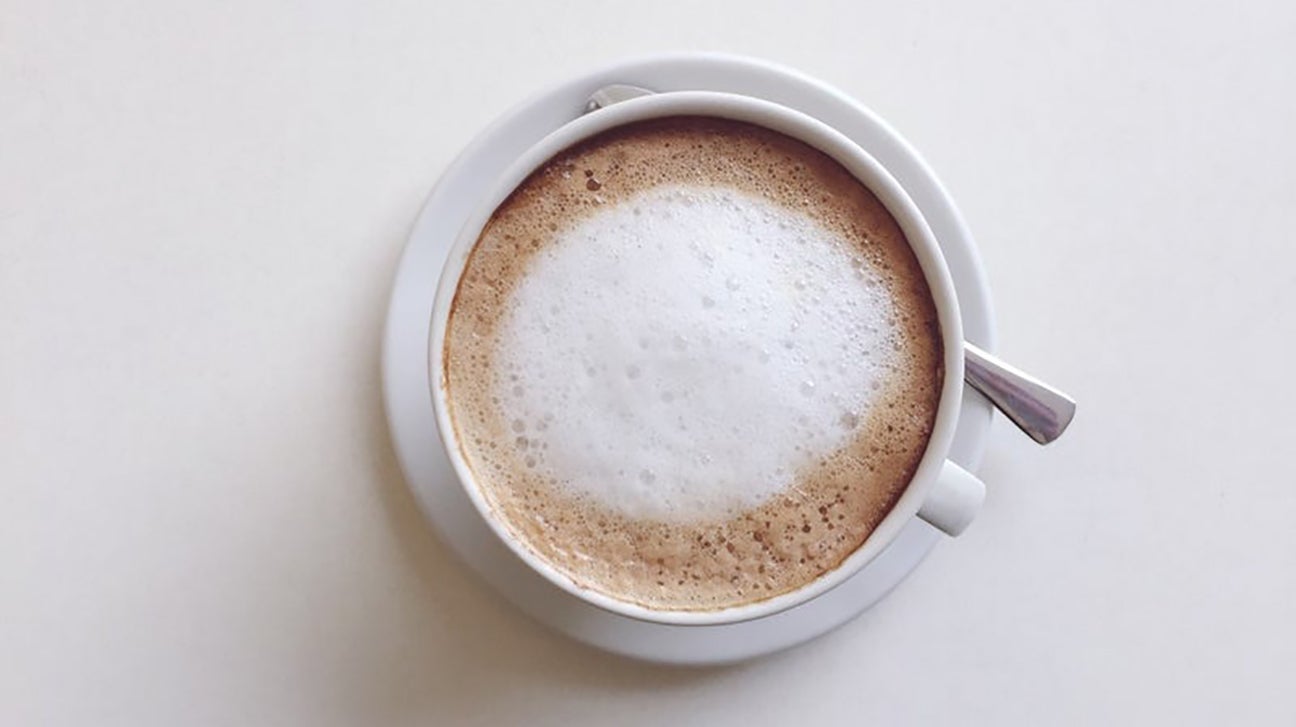Cappuccino
Cappuccino has variations that make use of more milk, such as the cappuccino chiaro, or white cappuccino, and the cappuccino scuro, or dry cappuccino. Cappuccino Freddo is the cold version of the coffee drink and is usually topped with small amount of cold, frothed milk. If you didn't pull the espresso directly into your cup, pour the espresso you made (in the moka pot or aeropress) into your serving cup. For a small cappuccino, use 1 shot (30 ml) of espresso. For a larger cappuccino, use 2 shots (60 to 80 ml). Try to warm your cup before you add the espresso and milk. This will keep your drink warmer for longer. Dark, rich espresso lies in wait under a smoothed and stretched layer of thick milk foam. An alchemy of barista artistry and craft.
Differences in Ingredients and Preparation

A latte is made up of coffee and hot steamed milk. The coffee can be replaced with another drink base like tea, mate or matcha. In Italy caffè latte is often prepared at home for breakfast. The coffee is brewed on stovetop Moka or caffettiera and poured into a cup containing heated milk. The Italian latte does not contain foamed milk. Outside Italy, caffe latte is made up of 1/3 espresso and 2/3 steamed milk; a 5 mm layer of foamed milk floats on top. Another version of latte is made with strong or bold coffee mixed with scalded milk in the ratio of 1:1. Though this is similar to a Cappuccino, the milk foam layer is of 2 cm in a Cappuccino.
Cappuccinos are prepared with espresso, hot milk, and steamed milk foam. The texture and temperature of milk is of prime importance. Milk is steamed to introduce tiny air bubbles into the milk; this creates what is known as micro foam and gives the milk a smooth texture and sweetness. The hot foamed milk is poured into the espresso which results in a 2 cm thick milk foam layer on top. Cappuccino has variations that make use of more milk, such as the cappuccino chiaro, or white cappuccino, and the cappuccino scuro, or dry cappuccino. Cappuccino Freddo is the cold version of the coffee drink and is usually topped with small amount of cold, frothed milk.
With the advent of single-serve coffeemakers, such as Nespresso and Tassimo, making lattes and cappuccinos at home has become easier in recent years, requiring less careful attention.
Origin of Latte and Cappuccino
Terms caffè and latte were first used in 1847 and later in 1867 they appeared in William Dean Howells essay 'Italian Journeys'. Latte originally means milk in Italian and the caffè version of this drink is an American invention. Caffè latte originated in Caffè Mediterraneum, a café in Berkeley, California and was brewed in its current form by Lino Meiorin for the first time. He added more milk to this otherwise strong cappuccino and called this new drink 'caffè latte'.
Cappuccino in commercial form was introduced at the beginning of 20th century, when patented espresso machines were introduced by Luigi Bezzera of Milan in 1901. These machines made the cappuccino very popular in cafes and restaurants and the current from developed by the 1950s.
Latte Art
Latte art refers to the style of pouring steamed milk into the espresso and create a pattern or design on surface of resulting latte. This can be achieved by embellishing the top layer of foam. The art is difficult to be created consistently and is dependent on experience of barista and quality of espresso machine. To pour is the challenge of the latte artist.
References
Cappuccino - Your inbox for news
for iOS and Mac
macOS Features
- Create your custom Press release
- Get your favourite news on the email inbox
- Daily or hourly updates
- Push Notifications
- Native RSS feed Support
- Filter, by recents, unread, starred
- Selective Notifcations source
- Smart Feed recognizer
- Custom Interval updates
- Fast Preview
- Interactive notifcation (Mute feeds)
macOS 10.12
or newer - 64bit
iOS Features
- Sync Feeds and Unread
- Discovery new sources
- Rich Push Notifications
- Today Extension
- Action to add new feeds from Safari Extension
- Native RSS feed Support
- Selective Notifcations source
- Smart Feed recognizer
- Custom Interval updates
- Fast Preview
- Interactive notifcation (Mute feeds)
Premium Features
For a subscription of only $9.99 per year (or 99 cents per month), Cappuccino also will:
- Email you a daily digest in newsletter format
- from news sources of your choosing;
- Send you push notifications for all news posts
- Allow app customization via a variety of themes.
Press
iMore 'Cappuccino helps you keep an eye on the news you care about most'
App Advice 'Cappuccino is a News reader with an email twist'
Macitynet 'Cappuccino, bellissimo e funzionale feed reader, gratis per Mac e iOS'
Applesfera 'Cappuccino, una nueva app de RSS con apariencia de cliente de correo electrónico'

© 2017 Nebula. All right reserved. @CappuccinoApp
Cappuccino App
Quick Start Guide
